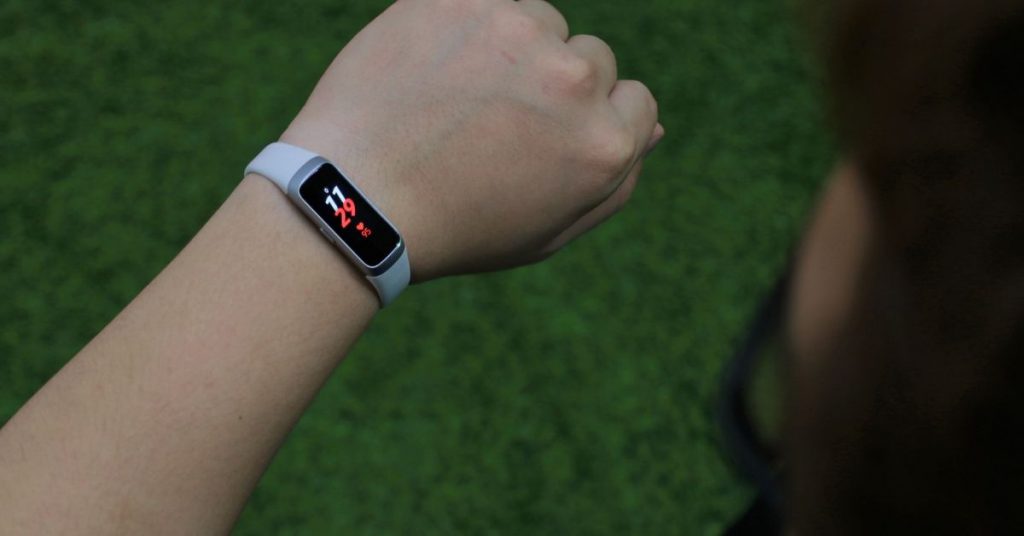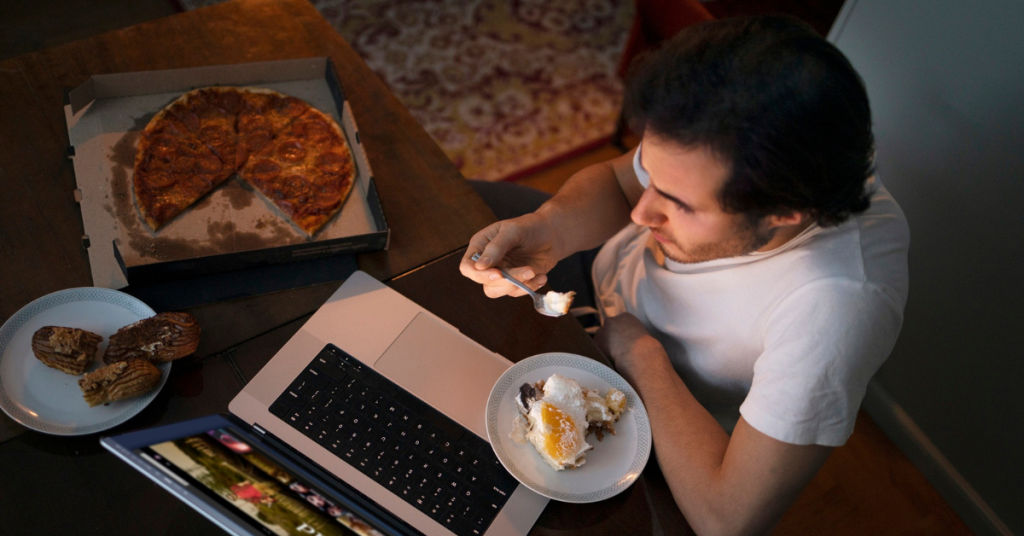The Samsung Galaxy Fit is the company’s latest fitness band to latch onto the wrists of fitness enthusiasts all around the world.
While I am not the perfect specimen of fitness, I thought it would be a great idea to at least start my fitness journey with the guidance of the Galaxy Fit.
An Eye For Design
The box that housed the Galaxy Fit was pretty standard—it consisted of the band, charger, and user manuals.

The band is fairly standard when it comes to design, but the way it’s fastened is unique and feels more secure compared to the other ones in the market.
The Fit is definitely the lightest if not one of the lightest fitness bands I’ve ever gotten my hands on.
The bezels of the Fit are almost half the size of the tracker. Being in the year 2019, most of the products in the market are pretty much bezel-less, so it stands out quite a bit.
Push Me Or Hold Me
On the Fit, you can find a physical button on the side of the tracker that acts as a home/back button.
Combined with the Galaxy Wearable app on your mobile device, you can then customise the button according to your own preferences.

I customised the button setting to track my jogging. Once I warm up, I only need to hold the button for the Fit to start counting down, and I start my jog with everything tracked.
If you wish, you can also enable automatic tracking using the app. After 10 minutes of activity, the app will automatically track what you are doing.
As is the case with automatic things, there might be a chance of it tracking the wrong activity, rendering the stats at the end of your exercise useless.
Keep Yourself Connected
Pairing the Fit with my phone was easy. All I had to do was follow the instructions and voila, it’s connected. I’ve used the band for nearly two weeks now and I had no issues with syncing it to my phone.

Tracks You Better Than A Helicopter Parent
When it comes to fitness bands, most people have an idea of what they want to track—heart rate, sleep, activities, and so on, and the Fit has options in spades.
By default, the band tracks your steps, heart rate, calories burned and distance travelled. You can also use it to check your stress levels.

If you’re keeping a close eye on your calorie intake, the app allows you to key your meals into the food database and track the nutrients and calories that you consume.
It can tell you when you’ve passed the recommended sodium intake for the day too, of which I’m quite guilty of.
It simply provides a rough guideline for you to keep a note of the food you consume. Sadly, the database for Malaysian food is lacking.
I noticed the app has plenty of store brands from the UK such as Aldi, Sainsbury, and ASDA, so I have an inkling that the database is more Western-centric.

Also as previously mentioned, there are plenty of exercises that can be tracked—be it golf, planking, archery, and even dead-lifting. You will never miss out on your gains now.
Sleep Better
You can also view your sleeping patterns on the app; it tells you if you missed your bedtime target and if you missed your wake-up target after pressing the snooze button for the umpteenth time.
I tracked my sleep throughout the week using the app and it showed that I’ve failed at maintaining a good sleep schedule—something that experts mention will help you fall asleep easier and keep you asleep during that time. (it’s beginning to sound like my mum!)

I have wildly different sleeping times as it depends on what I’m doing on a particular night (usually gaming, because tearing away from a hectic game is close to impossible).
Getting Fit
Having a fitness tracker on my wrist is a little pressure-inducing sometimes. It’s a constant reminder to myself to not be lazy and get to exercising, which definitely isn’t an easy task.
It does occasionally work, prompting me to stand or walk around after sitting for an hour. But between juggling work and life, finding the time to work out is more often easier said than done.
At least it doesn’t really nag at you.

Breaking away from routine takes a lot of self-discipline, which I will say is something that I lack.
I did manage to get myself to take a walk during the weekend and transition into some light jogging.
While I wouldn’t say that I’ve lost weight already, it’s a good start and something that I should make a habit out of.
It Lasts Longer Than You
The Galaxy Fit, depending on how you use it, can last quite a long time with a single full charge. During my first week with it, it managed to last a full week before hitting 0. The battery life depends on how much you use it.
For example, if you’re a gung-ho runner that runs about 20km per day, then it will definitely drain faster compared to my week-long battery life.
Verdict
At the end of the day, the Galaxy Fit is a noteworthy fitness band that can track a plethora of stats for you. If all you need are just rough statistics of how you live your daily life, then this is an easy pick for you.
But to be frank, it does not offer anything new compared to other brands in the market. It still boils down to what you want to track, its look, battery life and most importantly, the price.

It is slightly on the pricier side of things as it retails at RM369, compared to the Mi Band 3 that can be bought at just RM120.
I would personally go with this band as it has the essentials you would look for in a fitness band with fewer connectivity issues, unlike the Fitbit trackers that often fail at syncing.
But if you’re tight on budget, the Mi Band is a decent alternative, with the Mi Band 4 coming soon.
| Positives | Negatives |
| Week-long battery life | A little on the pricier side |
| So lightweight you can barely feel it | No extraordinary features |
| Tracks over 90 exercises | |
| No syncing issues so far |
- Check out our other gadget and app reviews here.
- You can find out more about the Samsung Galaxy Fit here.
VP Verdict is a series where we personally try and test out products, services, fads, and apps. Want to suggest something else for us to try? Leave a comment here or send the suggestion into our Facebook page.
















